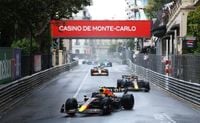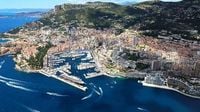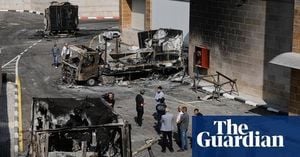In a move that cements its legendary status in motorsport, Formula 1 has confirmed that the Monaco Grand Prix will remain on the championship calendar through at least the 2035 season. The announcement, made on September 5, 2025, follows a new four-year contract extension on top of the previous agreement, which had been set to expire in 2031. For fans and drivers alike, this decision ensures that the iconic race around Monte Carlo’s glittering streets will continue to be a fixture of the F1 world for another decade.
The Monaco Grand Prix has always been more than just a race. Since its first inclusion in the inaugural Formula 1 World Championship season in 1950, the event has become the jewel in the crown of the sport, synonymous with glamour, history, and the ultimate test of driver skill. The narrow, 3.3-kilometre street circuit winds through the heart of the Mediterranean principality, demanding supreme concentration and precision from even the most seasoned drivers. It’s a spectacle that’s captivated audiences for generations, and its continued presence on the calendar is a testament to its enduring appeal.
“The streets of Monaco have been echoing with the sound of Formula 1 since the earliest days of the sport, so I’m delighted to announce the extension of this fantastic event to 2035,” said Formula 1 CEO Stefano Domenicali in a statement. “It is an iconic race that is loved by all drivers and fans, with a unique vibe thanks to its location on the world’s most glamorous Principality. I would like to say a special thank you to His Serene Highness, Prince Albert II of Monaco, Michel Boeri, President of the Automobile Club of Monaco and everyone involved in securing the long-term future of this historic partnership.”
Prince Albert II of Monaco echoed these sentiments, underscoring the deep connection between the principality and the world of Formula 1. “The renewal of the Monaco Grand Prix until 2035 is in keeping with a sporting and historical tradition to which the Principality remains deeply attached,” he stated. “I can only welcome this renewed commitment, which is testament to our collective success, the excellence of our collaboration with Formula 1, and the unique place that Monaco occupies in the international motorsport landscape.”
Monaco’s place in Formula 1 lore is undeniable. The race has been held 71 times, making it the second most frequently contested Grand Prix after Monza. Its unique challenges—tight corners, unforgiving barriers, and limited overtaking opportunities—have produced both thrilling moments and controversial processions. In 2025, organizers introduced a mandatory three-tire set rule in an effort to spice up the action, but the change led to teams deploying tactical strategies that sometimes slowed the pace and stifled overtaking. Still, the spectacle of F1 cars threading the needle through Monte Carlo’s historic streets remains unmatched anywhere else in the world.
The extension comes at a time of significant evolution within Formula 1’s global calendar. Monaco’s new deal now aligns with those of the Canadian and Madrid Grands Prix, which are also locked in until 2035. Meanwhile, Bahrain’s contract runs through 2036, Melbourne’s until 2037, and Miami and Austria have agreements stretching all the way to 2041. Sixteen of the current 24 venues now have confirmed deals that will see them feature deep into the 2030s. Potential new races in Thailand and South Africa are also showing interest in joining the championship, signaling F1’s ongoing expansion and the increasing value of long-term stability for its most storied venues.
Monaco’s previous contract extension, agreed last year, had already shifted the race’s date to early June starting in 2026. This move was designed to help regionalize the calendar, making travel and logistics more efficient for teams and fans. The 2026 season will also see the debut of a new street race in Madrid, replacing Imola, while the Dutch Grand Prix at Zandvoort is set to hold its final race that year. The US Grand Prix at Austin currently has one of the shortest contracts, running only through 2026, although a long-term extension is widely expected.
Despite its prestige, the Monaco Grand Prix has not been immune to controversy and debate. The circuit’s tight layout, largely unchanged since the championship’s early days, has faced criticism for not accommodating the wider, more technologically advanced cars of modern F1. Some argued that the championship had outgrown the circuit, raising questions about whether tradition should outweigh the desire for more overtaking and on-track drama. Regulatory tweaks, like the aforementioned tire rule, were introduced to address these issues, but their effectiveness remains a topic of discussion among teams, drivers, and fans.
Off-track matters have also played a part in Monaco’s recent negotiations. Sponsorship conflicts—most notably between Tag Heuer and Rolex, both of which have held the title of official timekeeper at different times—sparked tensions between the race organizers and Formula 1 management. However, these disputes have now been resolved, smoothing the path for the long-term partnership that this new extension represents.
Monaco’s race is not just a highlight of the F1 season, it’s a cornerstone of motorsport’s famed ‘Triple Crown,’ along with the Indianapolis 500 and the 24 Hours of Le Mans. Only one driver, Graham Hill, has ever managed to win all three, a testament to the unique challenges and prestige that each event offers. The continuation of the Monaco Grand Prix ensures that future generations of drivers will have the chance to chase this elusive achievement.
With the extension now official, anticipation for Monaco’s future races is already building. The event’s blend of history, glamour, and sheer difficulty ensures that it remains a must-watch for fans around the globe. As Formula 1 continues to evolve, the Monaco Grand Prix stands as a bridge between the sport’s storied past and its ambitious future—a reminder that some traditions are simply too important to let go.
For now, the streets of Monte Carlo will keep reverberating with the roar of Formula 1 engines, and the world will keep watching. The next chapter in Monaco’s remarkable story is set to unfold, promising more unforgettable moments in the years ahead.





